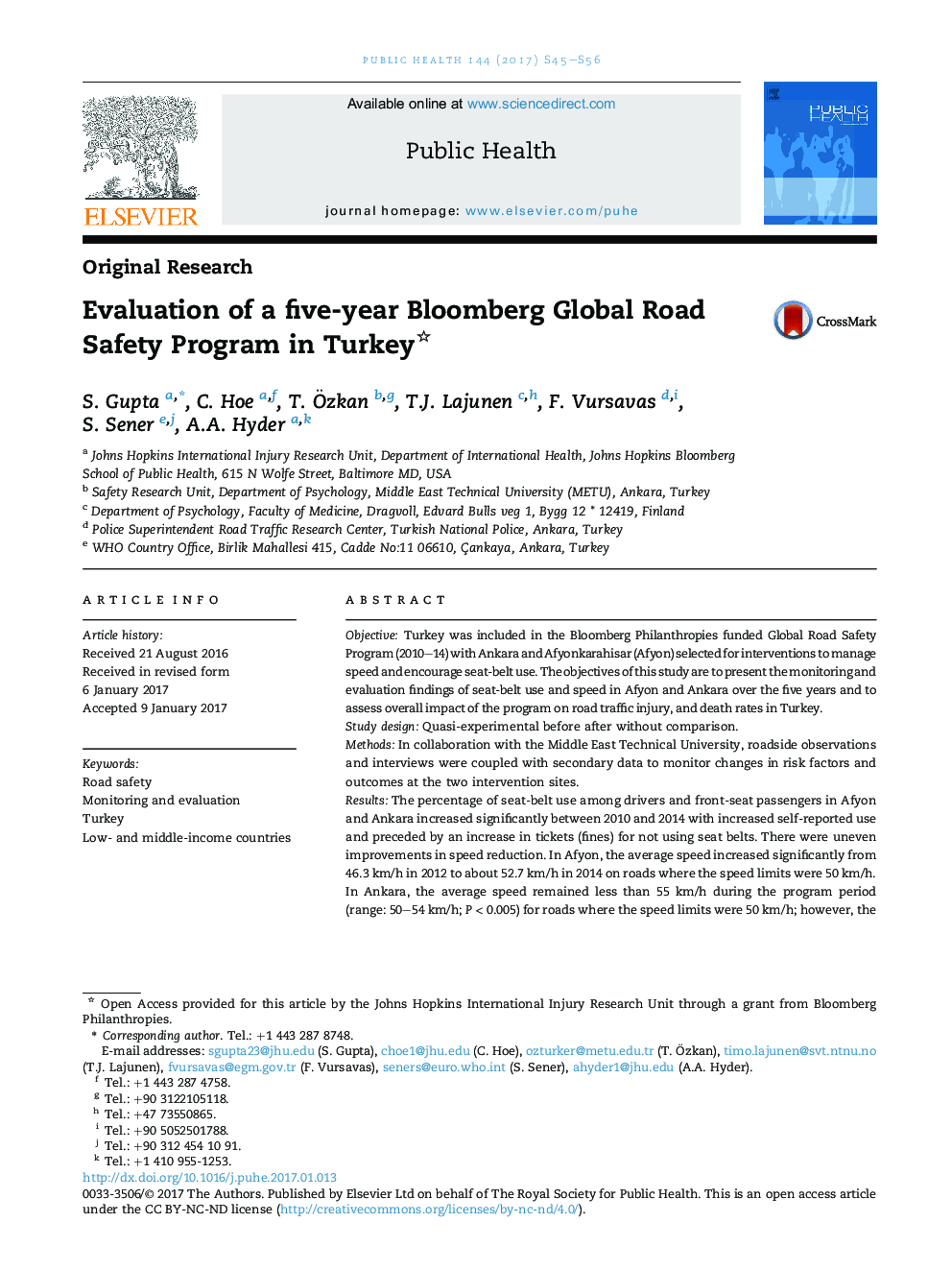| Article ID | Journal | Published Year | Pages | File Type |
|---|---|---|---|---|
| 5122745 | Public Health | 2017 | 12 Pages |
â¢Afyonkarahisar (Afyon) and Ankara provinces of Turkey selected for a program to increase seatbelt use and reduce speeding.â¢Goal of the study was to monitor and evaluate the impact of the program in Afyon and Ankara over five years.â¢Results indicate significant improvements in seatbelt wearing and uneven improvement in speeding in both intervention areas.â¢Local partner collaboration with the program garnered the support of high-level political leaders and strong enforcement.
ObjectiveTurkey was included in the Bloomberg Philanthropies funded Global Road Safety Program (2010-14) with Ankara and Afyonkarahisar (Afyon) selected for interventions to manage speed and encourage seat-belt use. The objectives of this study are to present the monitoring and evaluation findings of seat-belt use and speed in Afyon and Ankara over the five years and to assess overall impact of the program on road traffic injury, and death rates in Turkey.Study designQuasi-experimental before after without comparison.MethodsIn collaboration with the Middle East Technical University, roadside observations and interviews were coupled with secondary data to monitor changes in risk factors and outcomes at the two intervention sites.ResultsThe percentage of seat-belt use among drivers and front-seat passengers in Afyon and Ankara increased significantly between 2010 and 2014 with increased self-reported use and preceded by an increase in tickets (fines) for not using seat belts. There were uneven improvements in speed reduction. In Afyon, the average speed increased significantly from 46.3Â km/h in 2012 to about 52.7Â km/h in 2014 on roads where the speed limits were 50Â km/h. In Ankara, the average speed remained less than 55Â km/h during the program period (range: 50-54Â km/h; PÂ <Â 0.005) for roads where the speed limits were 50Â km/h; however, the average speed on roads with speed limits of 70Â km/h decreased significantly from 80.6Â km/h in 2012 to 68.44Â km/h in 2014 (PÂ <Â 0.005).ConclusionThe program contributed to increase in seat-belt use in Afyon and Ankara and by drawing political attention to the issue can contribute to improvements in road safety. We are optimistic that the visible motivation within Turkey to substantially reduce road traffic injuries will lead to increased program implementation matched with a robust evaluation program, with suitable controls.
